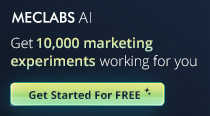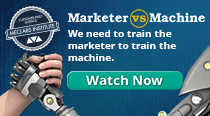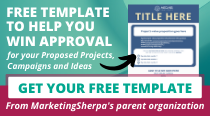June 13, 2002
Case Study
|
SUMMARY:
This Case Study proves it. You do not have to work for a big famous company , or have a huge online marketing budget, to get more sales from the Internet. Hear how a local white water rafting tour company did such a great, low-cost/high-impact, job with its site that Inc. Magazine named it "Best Small Business Web Site of the Year". (BTW: If you work in the travel or tourism industry this is a must-read.)
|
|
CHALLENGE
Because All-Outdoors Whitewater Rafting operates trips
on rivers within a two-to-three hour driving distance from
Silicon Valley, the Company felt the impact of the Internet
almost from the moment the Web was invented.
Frankly, at first the Internet was bad news.
For decades All-Outdoors had marketed by printing up a pile of
flyers, catalogs, posters and corporate discount coupons during
the winter off-season and then planting them in the human
resources department of every company they could get into just in
time for spring. It was incredibly effective.
Their second most effective marketing tactic was ads in the local
Yellow Pages ™ and AAA magazine.
Then as All-Outdoor's Jamie Low explains, "In 1995 as the
Internet came along, people stopped using their HR department for
that sort of information. There was a lot of corporate
downsizing. They started using intranets or employees would go
straight to the Internet. And people stopped looking at the
Yellow Pages unless they actually need a specific phone number."
Low was a full-time professional river guide at the time, but
he had majored in communications in college years before and had
always been interested in marketing. He pitched CEO Greg
Armstrong to let him work part-time on a low-budget Web site for
the Company. Impressed by Low's ideas and excitement, Armstrong
said why not?
CAMPAIGN
All-Outdoors' first site launched in 1996. It was not
remotely fancy, or very effective, at first. However, Low kept
working away at it, researching, testing, and measuring the
success of different tactics each year.
This careful, evolutionary approach took place on two concurrent
fronts:
-> Front #1: Driving traffic to the site
Low admits, "We tried everything." None of the paid
advertising options such as Yahoo Banner ads, brought in a high
enough return to be worth the cost of time and money.
Low had heard about search engine optimization: The science of
prepping your site's content, format and various tags to impress
search engine robots, early on. It had the advantage of being
fairly low cost (in fact, at the time it was fairly easy for do-
it-yourselfers, although it has since evolved to be more complex).
His first move was to redesign the site to take out the frames,
because most search engines do not notice pages within frames.
Next, he focused on creating a list of keywords and key phrases
that potential customers might use when searching online. There
turned out to be more than 1,200 of these terms, but it did not
make sense to invest hard work in optimizing for every single one
of them, so Low chose the best 30-40 to concentrate his efforts
on.
Interestingly, broad highly popular terms such as 'white water
rafting' didn't make the cut. "It's too generic," explains Low.
"It's not worth going after such competitive, difficult terms.
We spend more time focusing on regional terms like 'California
rafting.'"
Among other tactics, Low made sure these keywords appeared in the
copywriting throughout the site. (Go take a look at the first
paragraph of copy on the home page to see a great example of
search engine friendly keywords woven into human-reader friendly
copy. Link below.)
Early success also convinced the Company to change its 30-year
old name to be more search engine friendly. The original name
was All-Outdoors Adventure Trips. In 1996 it became All-Outdoors
White Water Rafting, and then in 2000 it was further adjusted to
All-Outdoors California White Water Rafting.
Next Low turned his attention to a links campaign; working to
get related sites to link back to him. Again, he carefully
focused on just the best, most relevant opportunities, instead of
badgering every remotely related Web site on the planet with form
letters begging for a link.
For example, he exchanged links with only the bed and breakfasts
near All-Outdoor's departure points that the customer service
department had already investigated and recommended.
When he could not find enough truly relevant sites with highly
valuable content to do link exchanges with, Low decided to create
some. (Note: search engines frown strongly on extra domains that
are built to try to trick them into giving higher or more
rankings. However, if the domain isn't an identical mirror of
your main site and it truly presents valuable, relevant content
to the human visitor, you're usually ok.)
So far he has created a total of eight other Web sites, each one
focusing on a particular river or on rafting in general. (Sample
link below.) Although these sites are hosted and maintained by
All-Outdoors, they are not heavily promotional. In fact you
won't see any banners or graphic ads for All-Outdoors, although
there are a few text-links.
Instead these sites are presented as an educational service and
resource for the rafting and river enthusiast community.
To get the educational content, Low worked deals to use free
excerpts from printed books, such as 'The Best Whitewater in
California' by Lars Holbek and Chuck Stanley, in exchange for
hotlinks to their publisher's online store. He explains, "We
were surprised at how simple it was. A lot of the books were
older and probably not selling in national distribution anyway.
The authors were really excited about it."
Low also started a regular email newsletter to support the site.
It is published biweekly in season, and only occasionally during
off-season. (For example he might run a holiday gift certificate
offer in the winter.)
He notes, "We try to provide really updated, useful information
in the newsletter. It's not much promotion anymore. It's more
relationship building than anything else."
-> Front #2: Converting site traffic into buyers
Although All-Outdoors has been around for years and has many
faithful clients, the average Web surfer might not know that. Low added elements to the site to establish serious real-world
credibility, such as:
- An eye-catching yellow and dark red "35 years in business"
icon at the very top of every single page of the site, next
to a toll free phone number.
- Prominent text copywriting throughout the site noting that
the Company has "over 35 years of experience."
- Pictures of magazines, the site has been featured in, on the
home page.
- Close to 270 pages of in-depth information about everything
you would ever need to know to make a decision to go on a
rafting trip, from accommodations to group discounts. Low
says proudly, "Other rafting companies have nine rivers on a
page. We have nine pages for each river."
Low says the biggest challenge for tourism and vacation-related
marketers is, "it's a service industry. You have a problem when
you have intangible products to sell people. You have to pull
people into the screen."
Each year he adds another element to the site to help
visitors get a true feeling for what a rafting trip is all about.
First he put in text content, then lots of photographs. Then he
began to build a special site section called Free Stuff that
includes:
- Printed catalog request form. Some people like to be able
to hold something in their hands to make it more real.
- A screensaver to download featuring 11 shots of action
highlights from the 1999 rafting season.
- Email postcards section so visitors can send rafting
pictures to friends or to their home email accounts to
remind them which site they were on (which of course has the
added benefit of driving more traffic).
- Virtual 360-degree photo tours of actual routes that bring
you the thrill of being on the whitewater. To get the best
shots, Low and another Guide kayaked and rafted out to his
favorite areas with special equipment provided by iPix. He
notes, "It was a fairly expensive project, we spent close to
$10,000 on it."
Previously many of All-Outdoors sales came from printed discount
coupons that it distributed in bulk to area companies. Low
replicated this tactic online by adding a 'Last Minute Discounts'
page to the site.
He had an XML feed set up between the reservation office and the
Web site department (which are in two different locations) so
reservations can change these discount offers online in a matter
of seconds without having to wait for a webmaster to change it
for them. Now whenever a particular trip has not sold enough
tickets, reservations can post it as a discount until it hits its
minimum, and then whip down the discount offer in order to sell
remaining seats at full price.
Last but not least, Low tried to replicate old-fashioned customer
service within the site as well. The main navigation bar
prominently features a group of six Quick Reference links based
on the top actions customers used to rely on the phone for:
1. Check Availability
2. Make a Reservation
3. Price Lists & Discounts
4. Group Trips
5. Trip Details & Maps
6. Frequently Asked Questions
Unlike other sites, which rely on a single all-purpose form or
online questionnaire to get information from visitors, Low broke
out the major actions into different forms. This makes visitors
happy because they feel their request will be taken more
seriously and possibly acted on more quickly. It also helps
customer service track, prioritize and react to sales leads far
more effectively.
RESULTS
From 1995-2000 All-Outdoors doubled its sales without raising its marketing budget at all. That does not mean that
the same money was spent in the same places however.
By carefully examining how each customer came in the door, Low
slowed shifted his expenditures from 100% offline in 1994, to
50/50 offline/online in 1998, to mostly online today.
Interestingly, the single offline expenditure he kept steady was
the printed catalog budget. Low did not need to print loads of
catalogs anymore, so he has redirected funds into higher print
production values for the few he does print. This means catalogs
are less disposable, and more likely to remain as proud fixtures
on your coffee table.
More results:
- Inc. Magazine named All-Outdoors the "Best Small Business
Web Site in America" for 2001. Low says, "It's been very
gratifying, we're still in shock over the whole thing."
- By 1998 visitors from search engines drove 70% of the
Company's new business, and 40% of total business. Largely driven
by search engines and links campaigns, this month alone (June
2002) the site has already gotten 60% more traffic than at any
other time in its history.
- By 2002 15% of sales were made to tourists from out of
state. Low remarks, "We could never reach that audience before.
Maybe we saw 5% before." Unlike locals, these vacationers are
more likely to purchase trips on regular business days. This has
help alleviate the traditional mid-week sales slump.
- The time customer service has to spend helping prospective
buyers has dropped dramatically. Low says, "It used to be we'd
spend 30 minutes on the phone explaining the experience. Now
people are calling us with a credit card number."
- While the screensaver and postcards have been fairly
popular, the 360-degree virtual tour is the killer app. Low
says, "We were looking to elicit an emotional 'Wow!' response
from people and we have. They call and say, 'I had my whole
family looking at this thing for hours.'"
The tour has also proven to be a great viral marketing tool,
because lots of rafters forward links to friends and colleagues
to show what an amazing trip they have just been on.
As the site's grown over the years, Low's job has grown from
being a part-time Web helper to the grand title of Internet
Marketing Director. Gradually he realized his favorite part of
the job is the search engine optimization, so he is currently
training his replacement in order to be able to work full-time at
for his own consultancy SearchEngineMarketing.com. Low still
continues to lead rafting trips as a Guide as well, but only on
the weekends.
Is he worried that competitors will read this Case Study and
steal his secrets? "No," he laughs, "We work so hard at staying
on the cutting edge that we make it impossible for them to catch
up. For example, we had a voicemail system back when they all
had answering machines. Eventually they got voicemail, but we’d
moved further ahead by that time."
Low gives enormous credit for this corporate culture to CEO Greg
Armstrong's leadership. "He's very much a visionary. If I had
worked for a different rafting company I would have run into a
lot of walls and been very frustrated. The CEO really has to be
on board and sold on the idea to be successful on the Web."
Useful links related to this story
All-Outdoor's main site
http://www.aorafting.com
Sample educational links site
http://www.tuolumne-river.com
SearchEngineMarketing.com
http://www.searchenginemarketing.com









